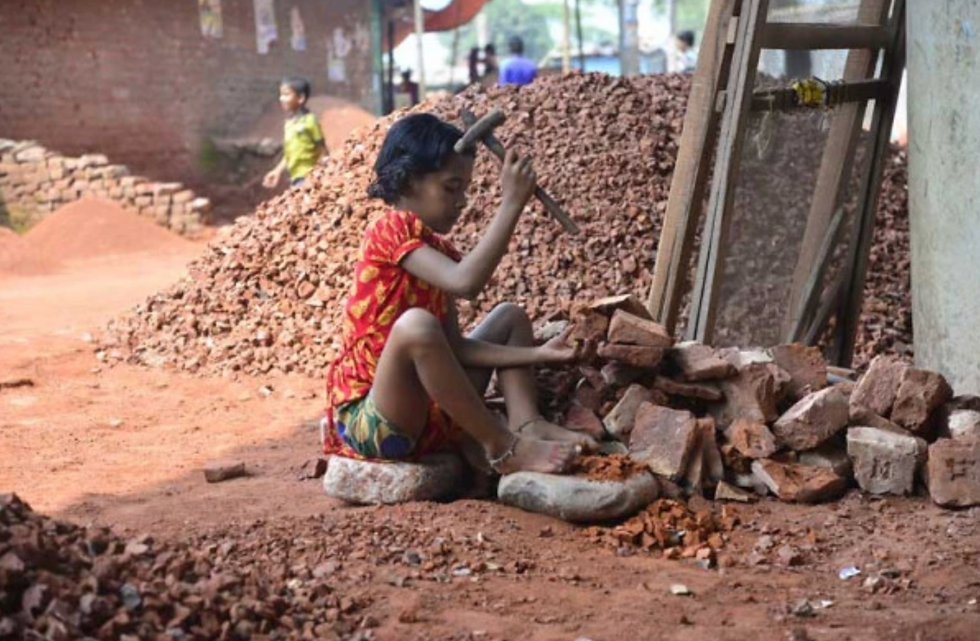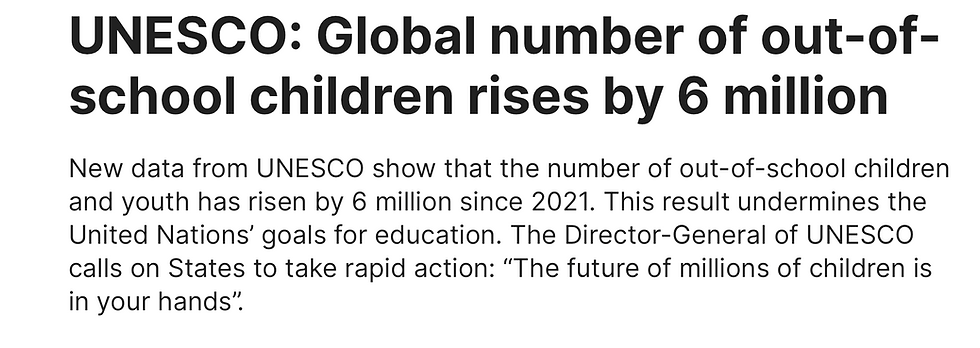Education In Crisis: Afghanistan's Girls and the Global Education Emergency
- Chase Glazier

- Sep 30, 2023
- 3 min read


According to the latest UNESCO figures, a troubling trend has emerged. There are 250 million children and youth currently out of school, marking an increase of 6 million since 2021. Disturbingly, a significant part of this surge is attributed to the mass exclusion of girls and young women from education in Afghanistan as well as the ongoing global stagnation in educational progress. This alarming revelation not only sheds light on a severe regression in global commitments to education but also jeopardizes the UN Sustainable Development Goal 4, which aspires for quality education for everyone by 2030.
I believe this urgent crisis needs to draw our attention to Afghanistan. The girls and young women of the nation have become the pronounced victims of regressive policies, seeing their rights to education pulled away. As we grapple with these startling numbers, it is crucial to consider the wider implications of this on gender equality, economic empowerment, and societal progress. If we neglect the educational needs of half the population, how can we expect nations to prosper?
The 2023 UNESCO Global Education Monitoring Report presents a grim picture of global educational progress. Despite an uptick in primary education completion (now at 87%) since 2015, and secondary education completion (at 58%); the rate of advancement is painstakingly slow. The impact of the COVID-19 pandemic has further exacerbated this problem, resulting in a decline of adult participation in education by 10%.
The international community's past efforts towards ensuring quality education for all seem to be unraveling. Only last year, 141 countries pledged at the UN Transforming Education Summit to overhaul their education systems to accelerate progress towards SDG 4. It is time for these countries to honor their commitments! If we don’t hold them accountable, the future of millions of children remains in jeopardy.
So, what can we do?
Firstly, it's crucial to raise global awareness. By amplifying the plight of Afghan girls and the broader education dilemma, we can reach global audiences. The power of media outlets, influencers, and organizations cannot be understated; they have a pivotal role in ensuring this issue remains a central topic in global discourse. That is exactly why I am highlighting this issue here. Secondly, there's an urgent need to reinforce financial commitments. Donor countries, alongside international organizations and private entities must bolster their financial support, particularly for educational infrastructures in the most vulnerable nations. A third essential step is to invest heavily in teacher training. With UNESCO's report indicating a shortfall of 1.7 million trained primary school teachers, it's clear that investing in this area will pave the way for a future generation of well-educated, empowered children. Diplomatic engagement forms the fourth pillar of our approach. It's vital to hold dialogues with nations, specifically Afghanistan.We must stress the undeniable importance of education for everyone, with a particular emphasis on the education of girls and young women. Lastly, we must not overlook the power of grassroots initiatives. Local and community-based organizations frequently make the most tangible difference on the ground. Offering them our financial and logistical support can spark meaningful changes, ensuring that every child gets the education they deserve.
The current educational crisis, epitomized by the girls of Afghanistan, should serve as a wake-up call. The world must come together, unified in its response, to ensure that the fundamental right to education is upheld for every child, irrespective of gender or geography. It's not just about numbers; it's about our collective future





Comments